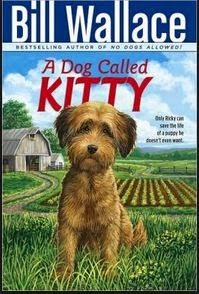Henry’s
Freedom Box
By
Ellen Levine and Kadir Nelson
Summary:
Henry’s Freedom
Box is a fictionalized story of a historical slave named Henry Brown. It follows Henry from a young age, where he
was separated from his family when he was sold.
Years go by and he dreams and he sings and he gets married. However,
things quickly change when his wife and children are sold and he is left alone
never to see them again. Thanks to a
bird and a friend he chooses freedom with the idea of mailing himself to a
state where slavery is not allowed. So
this book ends with Henry’s freedom and his new name “Henry Box Brown”
Citation:
Levine, E.,
& Nelson, K. (2007). Henry's freedom box. New York: Scholastic Press.
Beyond and Between:
This is a poignant
picture book that accurately shares the story of Henry Brown. The illustrator uses deep colors oil painted
colors to share the picture story while Levine does a wonderful job of
narrating the story. Each page is filled with large illustrations and one to
two paragraphs of text. However, because
of the historical nature of the text the reading level is higher than the
picture book may suggest. The neatest thing
about this book is the historical tie in at the end explaining where the
historical figure “Henry Box Brown” came from.
This also gives older readers a place to start researching if this book
was read for a school project.
Reviews:
Booklist
In a true story
that is both heartbreaking and joyful, Levine recounts the history of Henry
“Box” Brown, born into slavery. Henry works in a tobacco factory, marries
another slave, and fathers three children; but then his family is sold, and
Henry realizes he will never see them again. With nothing to lose, Henry
persuades his friend James and a sympathetic white man to mail him in a wooden
box to Philadelphia and freedom. Levine maintains a dignified, measured tone,
telling her powerful story through direct, simple language. A note at the end
explains the historical basis for the fictionalized story. Accompanying
Levine’s fine, controlled telling are pencil, watercolor, and oil paint
illustrations by Kadir Nelson that resonate with beauty and sorrow. When
Henry’s mother holds him as a child on her lap, they gaze out at bright autumn
leaves, and the tenderness is palpable, even as she calls to his attention the leaves
that “are torn from the trees like slave children are torn from their families.”
There is no sugarcoating here, and Henry is not miraculously reunited with his
wife and children; however, the conclusion, as Henry celebrates his new
freedom, is moving and satisfying. S.D.L.
Henry's Freedom
Box: A True Story From the Underground Railroad. (2008). Booklist, 104(13), 18.
Booklist Review
Artful iconography showcases
Kadir Nelson’s outstanding illustrations in this 2008 Caldecott Honor book that
tells the story of runaway slave Henry Brown. The camera focuses on soulful facial
expressions as emotionally laden music provides a backdrop. After his family is
sold, Henry’s despair lifts when he realizes a crate might be his vehicle to
freedom. The clever slave is packed into a box and mailed to Philadelphia. Animated
birds fly above the trees, tracing Henry’s uncomfortable and dangerous voyage
by train and steamboat. When the parcel arrives, those welcoming the crate
politely knock before jubilant singing reflects Henry’s wondrous and happy
emergence. This captivating production combines Nelson’s textural drawings,
Jerry Dixon’s poignant narration, and composer David Mansfield’s atmospheric mood
music. Includes an interview with author Ellen Levine and a “read-along”
feature that captions the text. Also available as a book and CD package
($29.95) and CD ($12.95). —Nancy McCray
McCray, N. (2009). Henry's
Freedom Box. Booklist, 105(19/20), 91.
Suggested
Uses:
Historical books always beg for
reality tie ins, especially for younger readers. It allows for higher level
grades to use the book and yet apply it to everyday homework. For this book I like the idea of a Timeline
type book display, following the beginning of the historical person to other
library sources and eventually this fiction book itself. Maybe involving a history class to create the
display for an extra credit assignment.
Thus not only displaying the book, but also engaging the readers.







